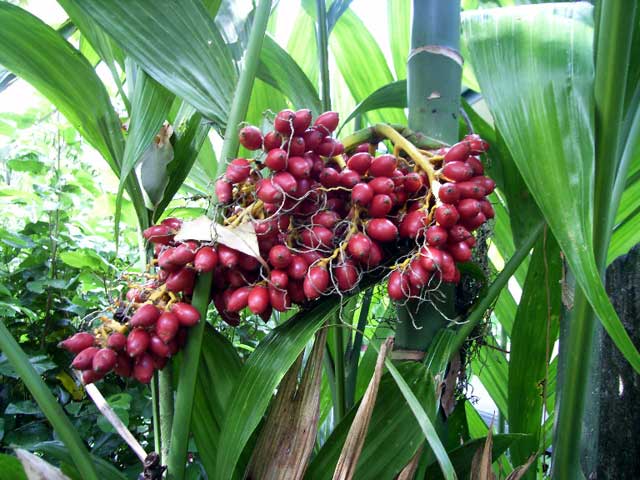Areca triandra: Difference between revisions
From PACSOA Wiki
No edit summary |
No edit summary |
||
| Line 32: | Line 32: | ||
<div class="row"> | <div class="row"> | ||
<div class="small-0 large- | <div class="small-0 large-1 columns"> </div> | ||
<div class="small-0 large-4 columns"> | <div class="small-0 large-4 columns"> | ||
[[File:Areca_triandra02.jpg|frame|Figure 2. ''A. triandra'' with attractive trunks.]] | [[File:Areca_triandra02.jpg|frame|Figure 2. ''A. triandra'' with attractive trunks.]] | ||
</div> | </div> | ||
<div class="small-0 large-2 columns"> </div> | |||
<div class="small-0 large-4 columns"> | <div class="small-0 large-4 columns"> | ||
[[File:Areca_triandra03.jpg|frame|Figure 3. ''A. triandra'' inflorescence.]] | [[File:Areca_triandra03.jpg|frame|Figure 3. ''A. triandra'' inflorescence.]] | ||
</div> | </div> | ||
<div class="small-0 large- | <div class="small-0 large-1 columns"> </div> | ||
</div> | </div> | ||
Latest revision as of 12:37, 19 July 2024
| Welcome to the PACSOA Palms and Cycads wiki!
If you have any information about this species, please help by updating this article. Once you are registered you can contribute, change, or correct the text, and even add photos on this page. Click on the edit tab above and play around. Any mistake can be easily corrected, so don't be afraid. |
Common Names:[edit]
Triandra palm
Distribution & Habitat:[edit]
Understory palm of tropical/sub-tropical rainforests. Found in India, and throughout south-east Asia.
Description:[edit]
A very attractive clustering palm to about 5m (16ft) high, with light green, white ringed, stems, and dark green fronds. It has fragrant, lemon scented, pale yellow flowers, which form into orange/red fruit about 25mm (1 inch) long.
Cultivation:[edit]
An easily grown palm for both the tropics and sub-tropics, it needs shade when young, as well as a moist, well drained soil. This plant is a very useful and attractive addition to a rainforest garden.
Contributed by:[edit]
Ian Edwards (Figure 1,2,3)
Don (Figure 4)




